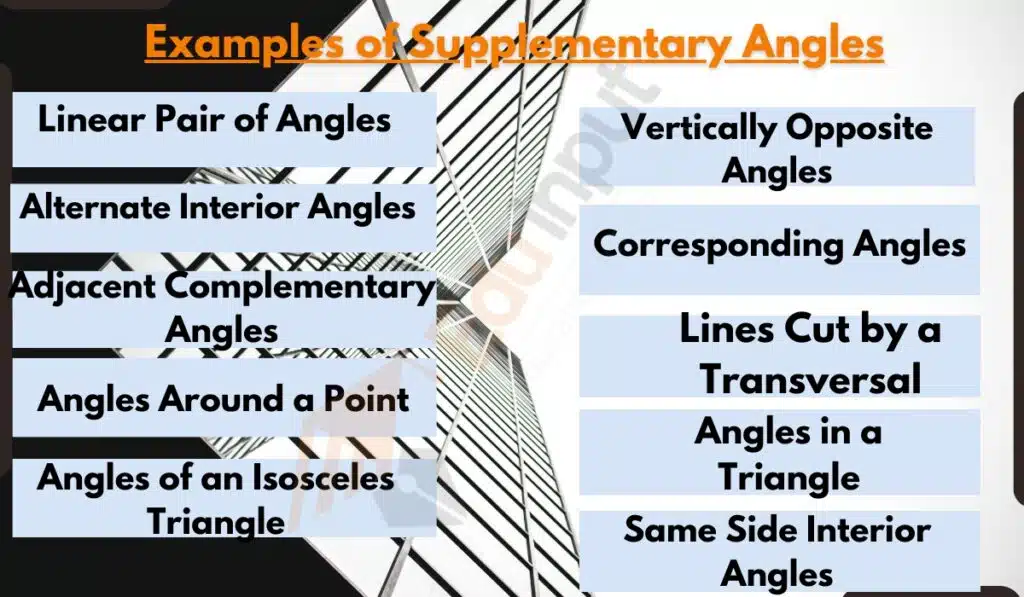10 Examples of Supplementary Angles
In mathematics, two angles are supplementary if the sum of their measures equals 180 degrees. Supplementary angles always add up to 180° and are formed when two lines intersect.
In this article, we will discuss ten examples of supplementary angles.

Examples of Supplementary Angles
These are 10 examples of supplementary angles:
1: Linear Pair of Angles
Adjacent angles formed when two lines intersect are supplementary.
For example, if two lines intersect and form angles of 115° and 65°, they are supplementary because 115° + 65° = 180°.
2: Vertically Opposite Angles
Vertically opposite angles formed by two intersecting lines are always supplementary.
For example, if two lines intersect to form angles of 40° and 140°, they are supplementary vertically opposite angles.
3: Alternate Interior Angles
Alternate interior angles formed when a transversal line intersects two parallel lines are supplementary angles.
They always add up to 180°.
4: Corresponding Angles
Corresponding angles formed by a transversal intersecting parallel lines are supplementary.
They add up to 180° even though they are on different sides of the transversal.
5: Adjacent Complementary Angles
Adjacent angles that add up to 90° are complementary.
Two complementary angles that form a right angle are also supplementary (90° + 90° = 180°).
6: Angles Formed by Parallel Lines Cut by a Transversal
When a transversal cuts two parallel lines, consecutive interior angles add up to 180°, making them supplementary.
7: Adjacent Angles Around a Point
Adjacent angles around a point on a straight line add up to 360°. Adjacent angles that share a common ray are supplementary (180° each).
8: Angles in a Triangle
Three angles in a triangle always add up to 180°, so any two angles in a triangle are supplementary angles.
9: Base Angles of an Isosceles Triangle
Two base angles in an isosceles triangle have equal measures and add up to 180°, making them supplementary.
10: Same Side Interior Angles
Same side interior angles formed between two parallel lines cut by a transversal are supplementary (they add to 180°).




Leave a Reply